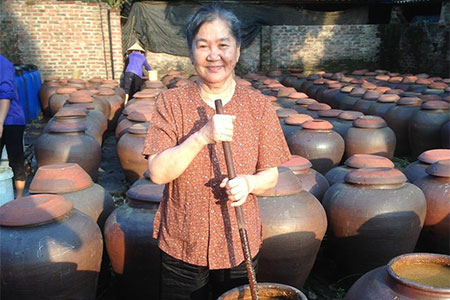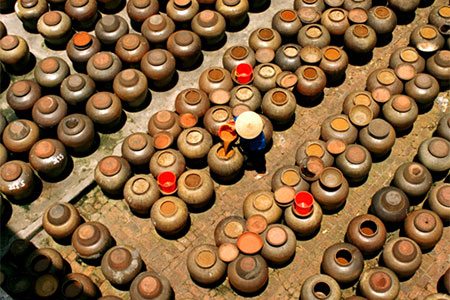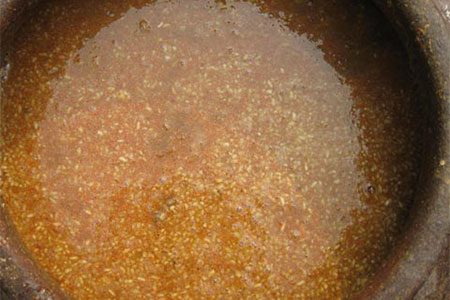In the trips around Hanoi, if visitors have the opportunity to visit the villages of Vietnam, and are indulge in ordinary dishes of Vietnamese people, you can see in the meals, there is an indispensable spice making tasty meals, which is soybean paste. Nowadays, there are many locals producing soybean paste, but the most delicious soybean paste has to mention “Tuong Ban” of Yen Nhan village, about 30 km from Hanoi.
Ban soybean paste is a type of soybean paste manufactured in Ban Yen Nhan town of Hung Yen province. When arriving the land of this village, visitors are not only impressed by the bottles of soybean paste with different sizes but also by characteristic smell spreading in space. Previously, Tuong Ban is a product used to give the king. Today, it is not only famous in Hung Yen in particular but also in Vietnam in general. A delicious batch of Ban soybean paste usually takes at least one to two months with sunny conditions. Materials to make Tuong Ban is simple and easy to find which are Hoa Vang sticky rice, soybeans and salt. However, to get the delicious soybean paste is not easy. The process of making Ban soybean paste includes three major steps which are making sticky rice musty, roasting bean, and drenching it.
Sticky rice is drenched and cooked then took out and left for about 2 days to be musty. Soybean is roasted and minced then drenched in crockery jars from 7 to 10 days. After completing two steps, people will take water from the jars and mix up with musty rice. They leave it for 1 day and 1 night to make sticky rice musty with yellow color, later, bring it to new jars of soybean mixed with salt, and dry in the sun. The sauce has "mesmerized" a huge number of customers in the South, the North, and also become a special dish of the Ha Thanh. The soybean paste has sweet taste of soy and sticky rice, and strong taste of salt as well as the eye-catching yellow color in addition to greasy feeling. Ban soybean paste has become the pride of Hung Yen’s Hung Yen and went naturally into folk until now. This soybean is not only to eat, to enjoy the sweet and salty taste of a dish but also feel the flavor of the countryside, feature of culinary culture of Vietnam.



